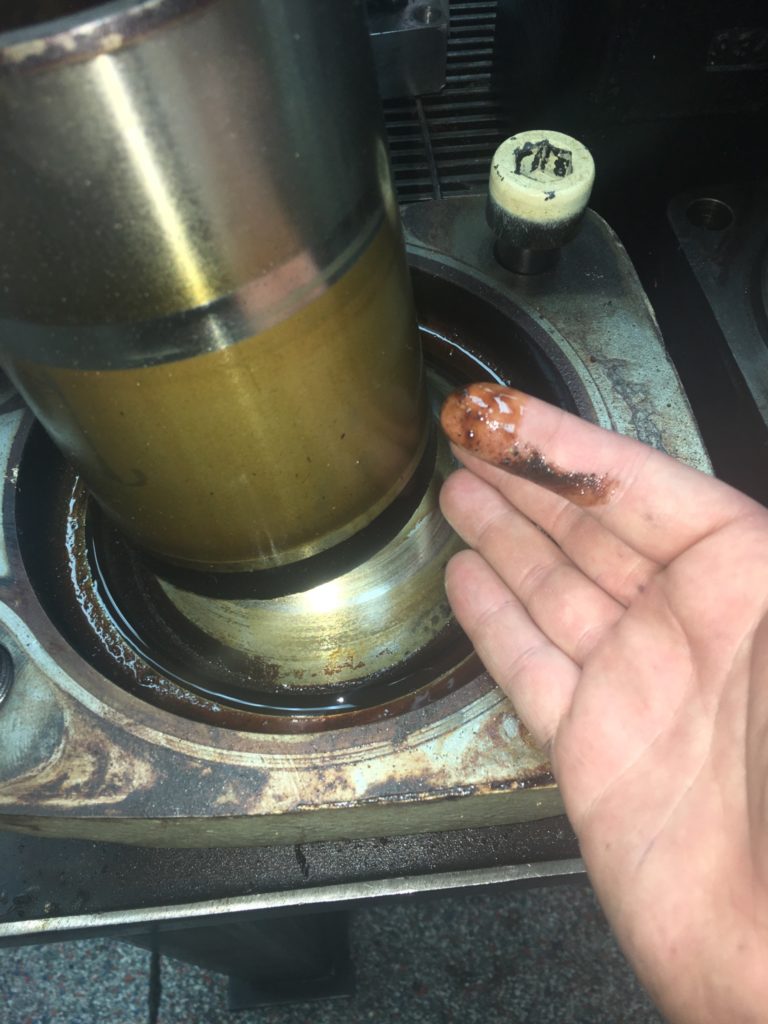On the Fly – Fluid Power Quality Analysis

In hydraulic systems one of the most often overlooked preventative maintenance measure is a good fluid quality control program. This is surprising because within the service center we see over 80 percent of all wear related failures are caused by particulate contamination within the power fluid. Understanding fluid quality loss and preventing outside materials from entering your hydraulic system is key to preventing machine downtime. Manufacturers often utilize labs that specialize in chemical analysis, but this process can take weeks, and requires a dedicated schedule of sampling that some maintenance crews struggle to fit in to their busy schedule. While we do recommend regular chemical analysis – around once every 1000 hours of system duty cycles – we are often asked what are some simple tests one can perform to determine if a possible contamination event has occurred.
Particulate Tests
Determining the amount of physical contaminate that exists in the system is perhaps the most important step in any fluid quality analysis. In addition, learning what the foreign matter consists of can lead a maintenance engineer to the source of the failure. For instance, the presence of brass particles can indicate wear is occurring on the swash plate within a hydraulic motor. The presence of aluminum could indicate wear on a piston rod occurring from a worn rod seal allowing dirt of sand to gouge the metal. In days past, particulate testers were large and expensive but now there are many laser particle counters that can be purchased for less than a thousand dollars.
Water Contaminant
Second to particle contamination as a leading cause of failure is moisture. Water getting into a hydraulic system interferes with fluid distribution, causes corrosion and can even add a biological element of contaminant through the growth of mold and mildew. The main test for moisture in a hydraulic system is to examine the fluid visually. A milky appearance can be a good sign that there is a high amount of water contaminant present.
Thermal Degradation of Hydraulic Oil
A third cause of failure within the fluid is thermal degradation of the oil itself. This is caused by the oil coming in contact with hot surfaces within the system and undergoing chemical change. This causes base oil breakdown and lowered viscosity – which results in added wear to moving parts. A good indication that a thermal event is occurring is a darkening change in the color of the fluid.
While there is no substitute for quality laboratory testing, hopefully these tips will help you to simply and intuitively diagnose fluid problems on the fly. If you see any of the above symptoms it is imperative that the failure is identified, fluid is replaced and effected parts are sent in for service.
Remember, if you have any hydraulic equipment problems, we are here to help. Check out our Industrial Hydraulic and Valve Repair Video ! Also be sure to visit us online at gesrepair.com or call us at 1-877-249-1701 to learn more about our services. We’re proud to offer Surplus, Complete Repair and Maintenance on all types of Industrial Electronics, Servo Motors, AC and DC Motors, Hydraulics and Pneumatics. Please subscribe to our YouTube page and Like Us on Facebook! Thank you!